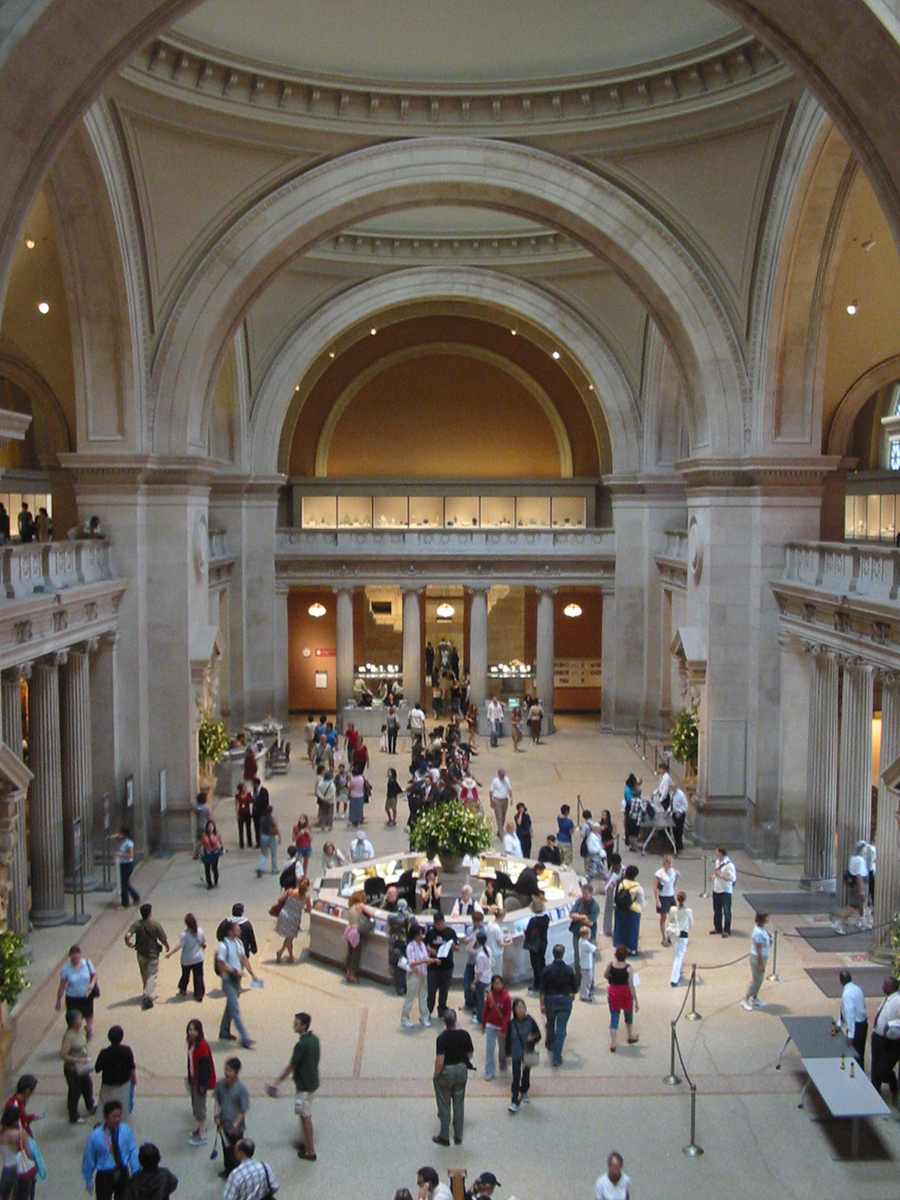The Trouble That Caused The Met’s Ticket Hike
The New York museum’s introduction of an admission charge shows us the problem with donor dependence and a hands-off government
The New York museum’s introduction of an admission charge shows us the problem with donor dependence and a hands-off government

In 2014, at a cost of USD$65 million, the Metropolitan Museum of Art in New York converted a stretch of its Fifth Avenue entrance into the David H. Koch Plaza, complete with trees, tables, and fountains. The gift of the American businessman, who’s worth an estimated USD$50 billion, is a pleasant-enough addition to what is perhaps the world’s greatest encyclopedic museum, even as its cost raised a few eyebrows. But last week, when the museum changed its policy of a ‘suggested admission’ to a mandatory USD$25 admission to anyone without a New York address, the donation has been criticized as more seriously ill-advised.
‘This single act of philanthropy (Vegas fountains and all) would have covered almost ten years of this iffy admissions policy,’ wrote Jerry Saltz in New York magazine. The USD$65-million donation is ‘an amount that makes the six-million-dollar anticipated increase from ticket sales seem puny,’ noted Alexandra Schwartz in The New Yorker.
While some have supported the ticket decision, responses like Saltz’s and Schwartz’s have been common: what is the Met thinking? And why have they spent their money so poorly, with an essentially pointless, USD$65-million plaza as Exhibit A?

In the museum’s defence, they are in a budget crisis and even a ‘puny’ USD$6 million from mandatory ticket prices still makes a difference. Although the museum has an endowment of USD$2.5 billion and its trustees have a combined worth of, incredibly, about half a trillion dollars, the Met is an exceptionally expensive museum to run. It hires world-renowned scholars, has a top-of-the-line conservation lab, it researches, archives, and records thousands of objects from other museums, puts on educational programmes and lectures, and sponsors excavations.
Currently, the museum is running a USD$10.1 million operating deficit, according to its own financial reporting. This can be traced both to the public’s decreasing willingness to pay the full suggested ticket price – a little over a decade ago, nearly 63 percent of Met-goers paid the full, suggested admission price of USD$25; last year, only 17 percent paid it – as well as the financial decisions made by Thomas P. Campbell, the former director.
But perhaps the lesson from the Met’s current financial struggles – and the real issue at stake that this ticket-price brouhaha reveals – is the trouble with the donor-based financial system relied on by the Met and so many other top-tier cultural institutions across the United States. The problem is neither with the Met itself nor with the unwillingness of most visitors to pay the suggested admission price. Rather, it lies with how cultural institutions are funded: by mega-rich philanthropists (who frequently enforce restrictions on their donations) and not by the federal government, which has long chosen to leave most American cultural institutions to fend for themselves.

‘We live in a country that believes that cultural institutions and universities should be funded philanthropically and through our own activities and not by government support,’ Daniel Weiss, the Met’s president and CEO, tells me; ‘and, as a result of that, we have to be as energetic and ingenious as we can be. And everything has to work.’
The solution to this has been a financial reliance on donors, which has generally worked well enough for the Met in the past. Tangible projects, like plazas and wings, are prestigious and attractive to the world’s billionaires – a concrete representation of their prestige and legacy. But leaning heavily on philanthropists has its downsides as well. The Met’s internal financials reveal the extent to which a select group of donors – both dead and alive – are able to dictate decisions in the museum, even as, in principle and spirit, it’s a museum meant to be in the public interest. In the Met’s latest ‘Report of the Chief Financial Officer,’ only about USD$1.6 billion of the museum’s USD$2.9 billion endowment is categorized as generating ‘unrestricted support for operations.’ The Met, therefore, can only spend about 55 percent of its endowment as it wishes – on salaries, repairs, maintenance, and so on. The other 45 percent is restricted to uses as outlined by donors.
‘When we are working with donors,’ Weiss says, ‘we’re making sure the restrictions they may wish to impose will not encumber the institution in the future. If you wanted to make a gift to us, we would push you as hard as we can to make it as flexible as possible.’

But the truth is that much of the philanthropic funding for the museum is indeed restricted to specific uses. The near-majority control that a select group of mega-donors has over the use of a public museum’s fiscal resources is therefore of some alarm. How public can a public museum be if 45 percent of its finances are restricted by private donors? And what happens when the museum is running a deficit, which, although partly self-inflicted, could seemingly be resolved by the reallocation of some of this money?
All of this begs the question: is the donor model feasible going forward?
On the face of it, it would seem there are few alternatives. The average cost of one visit to the Met is USD$43, Weiss tells me, so even with out-of-town visitors paying the now-mandatory ticket price of USD$25 each, every visit is still significantly donor-subsidized. I believe I speak for most when I say I’m grateful to the donors who have given renowned artworks and collections and paid for vital museum additions and upkeep. There is little question that without its donors, the Met – and nearly every other significant American cultural institution – would cease to exist. And, if the desire were to dissociate from the donor model entirely, every visitor would have to shell out at least USD$43 just to keep the museum barely afloat – even that probably wouldn’t cut it – which seems an unlikely solution.

The underlying issue, therefore, is one of economic structures at large. When a select few can become disproportionally wealthy and the government does little to spread their wealth, their philanthropy is not only appreciated but of absolute necessity. The fact that the American government long ago decided that its cultural institutions would be financially left to their own devices is the corollary issue.
Although they may be funded by local taxes, as the Met is, American cultural institutions are, with rare exceptions, left to fundraise and solicit donors as their principle means of survival. (The US government tends to defend this decision by pointing out that not funding its cultural institutions means the institutions don’t have to pay certain taxes – like property tax.) The Met, impressively, raises more than USD$200 million a year philanthropically, according to Weiss. So the fact that this still isn’t enough to let people now visit for anything less than USD$25 is a testament to how badly government support is needed for cultural institutions. At only 0.25 percent of the country’s gross domestic product, the United States’ spending on cultural institutions is the second lowest of any country tracked by the Organization for Economic Co-operation and Development, save for Colombia. (According to the most recent data from both the OECD and Eurostat, as of 2015, Iceland spends the most on cultural endeavors: 3.2 percent of GDP; France: 1.3 percent; Spain: 1.1 percent; Germany: 1.0 percent.)
American cultural institutions are therefore all but forced to rely on donors, often dealing with restrictions on how the museum can spend their funds. Whether it’s a slight decrease in donations, visitors’ decreasing willingness to pay the full price, or a few poor managerial decisions, just a single slip-up harms the entire museum and forces unprecedented changes. It is a system that keeps too many great American cultural institutions existing on a knife’s edge. Even a State Department article, defending the government’s stance, admits museums are funded ‘precariously.’

Philanthropy itself – even if it can be increased and better allocated – isn’t a sustainable solution to the success of cultural institutions. From now on, out-of-town visitors to the Met won’t be quite as impressed with the USD$65-million plaza since they must now reach into their pocket to pay a mandatory USD$25 entry fee. But this one-off example neither fully understands the issue nor goes deep enough. What about the structural inequalities that allow one person to toss of USD$65 million while another struggles to pay USD$25? Or how about the third-world-level funding that the federal government allots American cultural institutions while ever-increasing military spending?
There’s understandable frustration surrounding the ticket hike, even as it looks to be the most viable move for the Met. But when it comes to the financial woes of so many American cultural institutions, it’s best not to get caught in the weeds. The underlying issues of relying on mega-rich donors who call their own shots and a government that all but ignores the majority of our cultural institutions point to much grander – and much more serious – issues of American culture.
Main image: The Metropolitan Museum of Art of New York. Courtesy: Wikimedia Commons





















